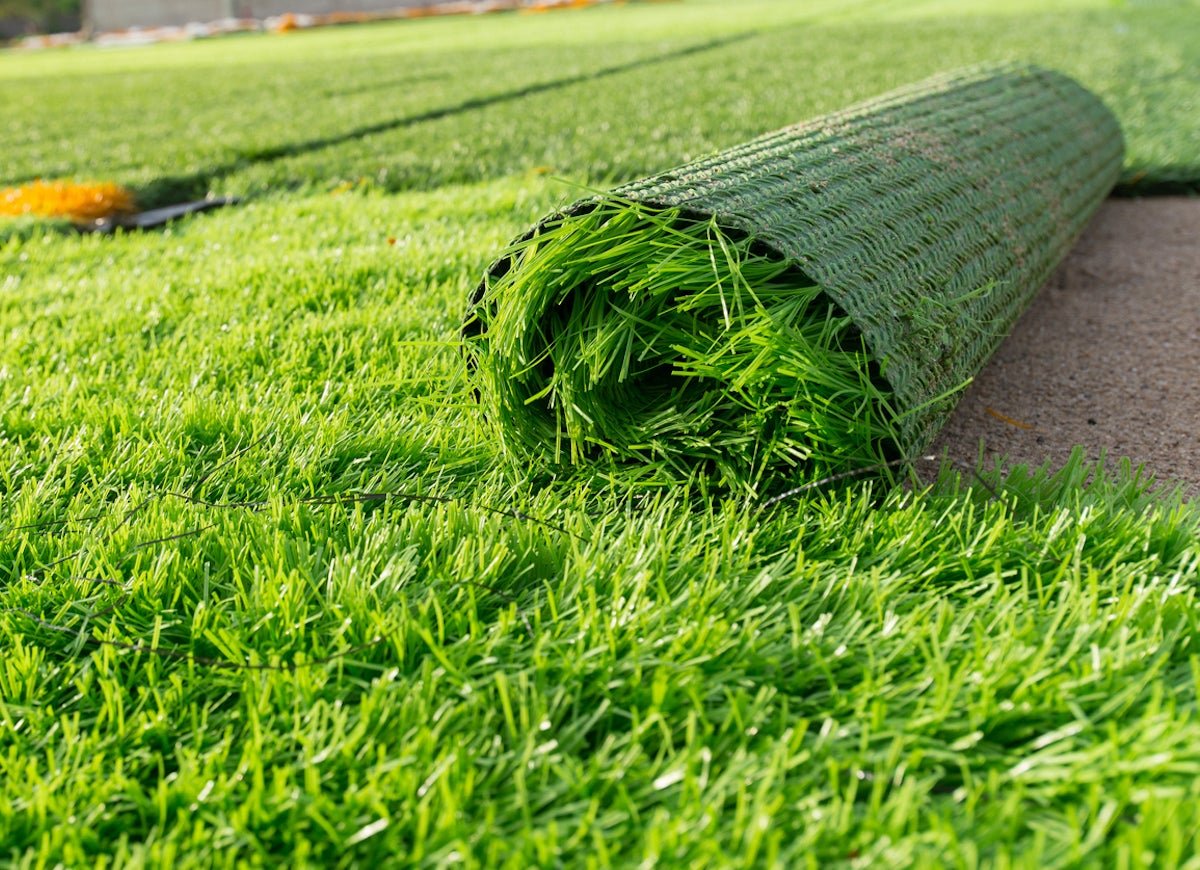Introduction
Tired of muddy patches in your garden? Transform your outdoor space with artificial grass! Laying fake grass on mud might seem daunting, but with the right preparation and a little know-how, you can achieve a beautiful, low-maintenance lawn. This guide will walk you through the process, step-by-step, ensuring a successful installation.
Preparation: Laying the Foundation
1. Check for Utilities
Before you begin, locate any buried utilities like cables or pipes. Avoid damaging them during the installation process.
2. Assess Drainage
Ensure your chosen area has adequate drainage to prevent waterlogging. A slight gradient will help with water runoff.
3. Weed Control
Apply a strong weed killer to the area, allowing it to work for a few days before proceeding.
4. Soil Removal
Remove the existing soil down to a depth of 75-100mm. This will create a level surface for your artificial grass.
5. Leveling and Grading
Flatten the area and create a smooth, even surface. Slight undulations will show through the artificial grass.
6. Weed Membrane
Lay a weed membrane over the prepared area to prevent vegetation from growing through your new lawn.
7. Edging (Optional)
Install edging around the perimeter of your fake grass area. This will create a neat border and prevent weeds from encroaching.
8. Aggregate Base
Fill the area with type 1 aggregate to an approximate level of 60mm. Use a wacker plate to compact the aggregate and then apply a layer of sharp sand. Finally, use a screed bar to even everything out.
Laying the Artificial Grass
1. Shock Pad Underlay
Start by laying your shock pad underlay. Ensure it butts up against the edging or perimeter. Roll it out and cut it to the desired shape. Use jointing tape to secure any separate pieces together.
2. Synthetic Grass Installation
Roll out your artificial grass across the area, leaving 5cm extra around all edges. Allow the grass to settle for 2-3 hours before cutting it to size.
3. Joining Artificial Grass
If your area is large, you may need to join multiple pieces of artificial grass. Follow these steps:
- Align the two pieces, pile upwards, and line up the edges.
- Fold the edges back about 25cm to reveal the back of the grass and stitch lines.
- Cut 2-3 stitch lines down each edge.
- Turn the two sections over and check the alignment.
- Apply jointing tape and press firmly to ensure a strong bond.
4. Glue Application
Apply a generous layer of glue to the entire perimeter edge of the underlay. Work quickly, as the glue will start to harden within 30 minutes.
5. Bonding and Drying
Allow the artificial grass and underlay to bond for at least two hours before walking on the lawn.
6. Sanding and Brushing
Infill the newly laid fake lawn with kiln-dried sand. This will help keep the grass in place and prevent creases. Brush the grass with a stiff broom to lift the fibers.
Maintenance
- Regular brushing with a stiff brush or plastic rake will help maintain the visual appeal of your artificial grass.
- A leaf blower, broom, or leaf rake can be used to clear debris.
- Spillages can be flushed out with water.
- Be cautious when placing heavy objects or children’s play equipment on the lawn.
- Avoid placing hot objects or barbeques on the artificial grass.
Conclusión
Laying artificial grass on mud can be a rewarding project. With careful preparation and the right tools, you can transform your muddy patch into a beautiful, low-maintenance lawn. Enjoy the benefits of a lush, green space all year round!
PREGUNTAS FRECUENTES
Q: How long does it take to lay artificial grass on mud?
A: The installation time depends on the size of the area and the complexity of the project. It can take a few hours for a small area, but larger projects may take a full day.
Q: What type of sand should I use for infilling?
A: Use weed-free, kiln-dried sand for best results.
Q: Can I lay artificial grass on a slope?
A: While a slight gradient is ideal for drainage, it’s possible to lay artificial grass on a slope. However, ensure the slope is gradual and the drainage is adequate.
Q: How do I clean my artificial grass?
A: Regular brushing with a stiff brush or broom will remove dirt and debris. For stubborn stains, use a mild detergent solution. Avoid using harsh chemicals or abrasive cleaners.
Ready to create the perfect artificial grass lawn? We’re a professional artificial grass manufacturer in China, and we’re excited to help you bring your vision to life. We offer free artificial turf samples.Contact us today for a free site plan and quotation plan.

